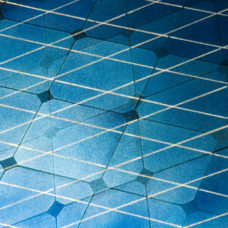Conventional memory devices have unique properties that make them best-suited for specific purposes, and also some serious drawbacks.
DRAM (Dynamic Random Access Memory) and SRAM (Static Random Access Memory) are used in the cache and active memory. They are optimized for speed, but with a high operating voltage cost.
Flash memory is non-volatile, meaning they don’t require a continuous power supply to keep data stored. But this non-volatility comes with a high cost per megabyte compared to traditional hard drives and high voltage to rewrite data.
Scientists have been working for years to find alternative memory technology, or a universal memory device, that addresses the shortcomings of conventional memories.
Speed, Non-volatility, and Low-Voltage, All in One Universal Memory Device
Designing a universal memory device with the speed and cost-effectiveness of DRAM, and the non-volatility of flash, without the high-energy supply needs?
That’s a hard nut to crack. But researchers at Lancaster University in England may have discovered “the ‘Holy Grail’” of computer memories.
The team announced they have invented and patented a new type of memory to solve the “digital technology energy crisis.”
According to Manus Hayne, a physics professor at Lancaster, the concept of a universal memory device is widely seen as unfeasible if not impossible. But his team, with their patented technology, has shown the contrary.
“The idea is to combine the advantages of both [DRAM and flash] without their drawbacks, and this is what we have demonstrated. Our device has an intrinsic data storage time that is predicted to exceed the age of the Universe, yet it can record or delete data using 100 times less energy than DRAM,” says Professor Hayne, lead author of the paper.
Thanks to quantum mechanics, the team managed to combine stable data storage, or non-volatility of flash drives, with low energy and speed of DRAM memory. There’s no need for a compromise ground where we have to choose between either of the memory optimization directions.
The new memory technology would allow data centers to reduce peak power consumption by a fifth. It also enables computers to go into sleep mode, imperceptibly even between keystrokes, to save energy.
As researchers noted, this universal memory device could replace the $100 billion DRAM market. As a US patent has been issued, there’s already interest in the technology from several companies, if they’re not directly involved research-wise.



















Comments (0)
Most Recent